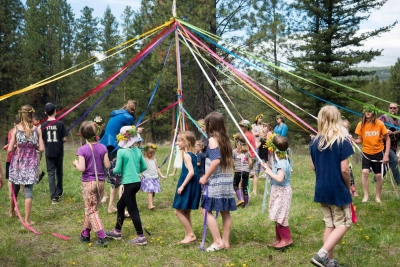
Throughout the years and decades, there have been different meanings, festivities, and representations of May Day. The meaning of seasonal change has been the most significant one amongst different countries.
May Day is one of the four ancient Celtic cross-quarter days, making it an astronomical holiday as it falls between the March equinox and June solstice. Originating from its Celtic name, “Belthane,” Beltane was a spring celebration that included dancing, singing, special bonfires, and house doors and animals would be decorated with yellow May flowers and ribbons. During this time, in various communities in Ireland, people would visit special wells and the Bethane dew was believed to bring beauty and youthfulness to those around it.
In the Middle Ages, English villages had homes with maypoles from rejoice and celebrations of May Day. Villagers would go into the woods to find maypoles set up from towns and cities. Because maypoles came in different sizes, villages would compete with each other to see who had the tallest one. People would dance around them because the pole symbolized male fertility as baskets and wreaths symbolized female fertility.
In the 19th century, a new meaning of May Day came about. May Day also became known as International Workers’ Day for labor rights and an eight hour work- day in the United States.
As time went on, different cultures created their own traditions in alignment with their beliefs. Europeans and Americans celebrate May Day with flower crowns, maypole dancing, and by making flower baskets to share with loved ones. In Hawaii, May Day is known as “Lei Day”, a celebration of the aloha spirit and the giving of the flower. What a better way to celebrate than with the people you love!
Credit : National Day
Picture Credit : Google




